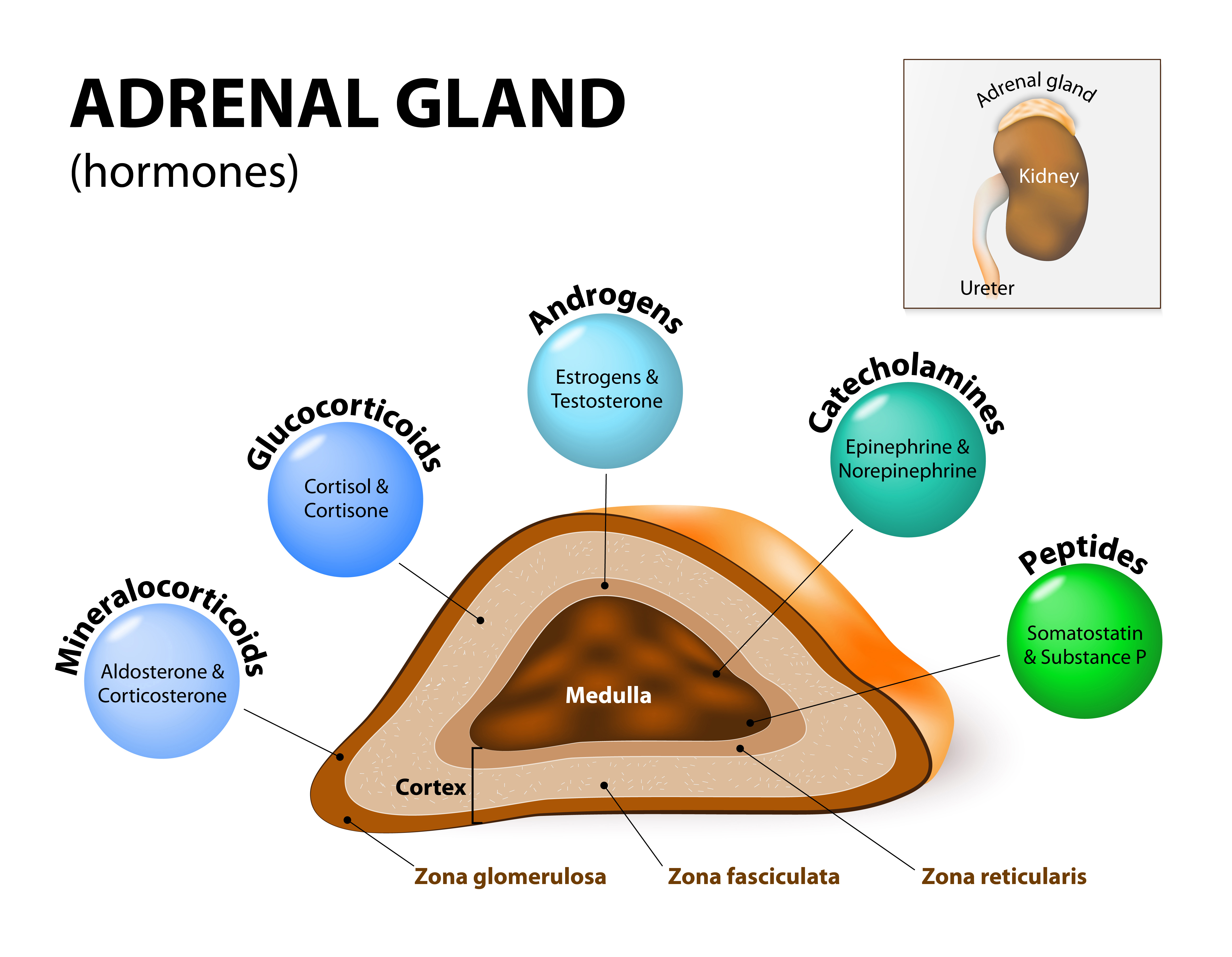Adrenal Cortex: Structure,Hormones and Disorders MCQ - Practice Questions with Answers
Edited By admin | Updated on Sep 18, 2023 18:34 AM | #NEET
Quick Facts
-
24 Questions around this concept.
Solve by difficulty
If 'X' is a hormone which controls the carbohydrate metabolism in the body and 'Y' is a hormone which controls the secretion of 'X', then 'X' and 'Y' are
Which one of the following hormones is not involved in sugar metabolism?
Glucocorticoids are produced by
Concepts Covered - 2
Adrenal Glands or Suprarenal Glands: Adrenal Cortex
- Adrenal Glands are paired structures located on the top of the kidneys.
- Each adrenal gland has two parts:
- external adrenal cortex
- internal adrenal medulla
- The cortex is surrounded by a fibrous capsule.
Adrenal Cortex:
- The adrenal cortex is derived from the mesoderm of the embryo.
- It is subdivided into three zones:
- Zona glomerulosa: This is the outer zone that lies just below the capsule. It constitutes about 15% of the gland. Mineralocorticoids are secreted from this region.
- Zona fasciculata: This is the middle zone which is widest of the three zones. It constitutes about 50% of the gland. Glucocorticoids are secreted from this region.
- Zona reticularis: This is the inner zone that constitutes about 7% of the gland. Gonadocorticoids are secreted from this region.
Hormones of the Adrenal Cortex:
- Mineralocorticoids:
- They are responsible for the regulation of mineral metabolism.
- Aldosterone (salt-retaining hormone) is the principal mineralocorticoid (90 to 95%) in humans.
- It is secreted when the sodium level is low.
- It acts on the kidneys to cause more sodium to be returned to the blood and more potassium to be excreted.
- As the sodium concentration in the blood increases, water follows it by osmosis, so the blood volume also increases.
- Thus the effect of aldosterone is to increase both sodium and water in the blood.
- Glucocorticoids:
- They affect carbohydrate metabolism, however, they also affect the metabolism of proteins and fats.
- Glucocorticoids include three main hormones: cortisol (= hydrocortisone), corticosterone and cortisone.
- Cortisol is the most abundant (about 95%).
- It stimulates the liver to synthesize carbohydrates from non-carbohydrates such as amino acids and glycerol.
- The third effect of cortisol is to stimulate the break-down of fats in adipose tissue and release fatty acids into the blood.
- It retards phagocytic activities of WBCs and thus suppresses ‘inflammation reaction’.
- Cortisol is also “immunosuppressive”.
- It suppresses the synthesis of antibodies by inhibiting the production of lymphocytes in lymphoid tissues.
- Cortisol has the capacity to cope with stress.
- Gonadocorticoids:
- They are also called sex hormones of adrenal glands.
- Large quantities of male than female sex-corticoids (sex hormones) are produced.
- These male sex hormones are called androgens which are important in the development of a male foetus.

Disorders of Adrenal Cortex
(i) Addison’s disease:
- It is caused by the deficiency of mineralocorticoids and glucocorticoids.
- It is also caused by the destruction of the adrenal cortex in diseases such as tuberculosis.
- Its symptoms include low blood sugar, low plasma Na+, high K+ plasma, increased urinary Na+, nausea, vomiting, diarrhoea and a bronze-like pigmentation of the skin.
- Severe dehydration is also common in the person suffering from this disease.
(ii) Cushing’s Syndrome:
- It is caused by an excess of cortisol which may be due to a tumour of the adrenal cortex.
- It is characterised by high blood sugar, the appearance of sugar in the urine, rise in plasma Na+, fall in plasma K+, rise in blood volume, high blood pressure, obesity and wasting of muscles of thighs and pectoral and pelvic girdles.
(iii) Aldosteronism (Conn’s Syndrome):
- Excessive production of aldosterone from an adrenal cortical tumour causes this disease.
- Its symptoms include a high plasma Na+, low plasma K+, rise in blood volume, high blood pressure and polyurea.
(iv) Adrenal Virilism:
- The appearance of male characters in the female is called virilism.
- Excessive production of male sex-corticoids (androgens) produces male secondary sexual characters like beard, moustache, hoarse voice in the woman.
(v) Gynaecomastia:
- It is the development of enlarged mammary glands (breasts) in males.
- It is due to excessive secretion of female sex hormones (oestrogens) in males.
- Decreased testosterone may also lead to gynecomastia.
Study it with Videos
"Stay in the loop. Receive exam news, study resources, and expert advice!"


